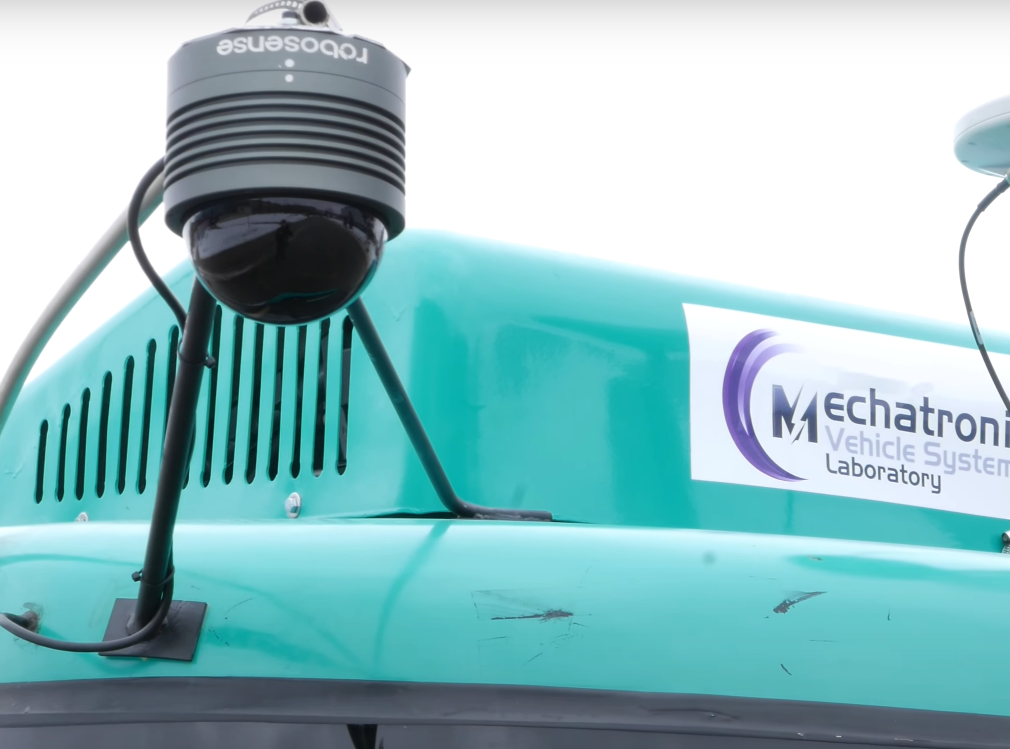

A self-driving shuttle bus - the first at any academic institution in Canada - could be operating on the Ring Road at the University of Waterloo by the time students return to campus for in-person classes as COVID-19 restrictions ease.
The bus is equipped with RoboSense Bpearl, a new type of short-range LiDAR designed specifically for the detection of near-field blind spots. Loaded with RoboSense's innovative signal processing technology, RS-Bpearl is able to detect objects within a range of less than 5 centimeters, plus a 360°x 90° super-wide field of view. In this case, RS-Bpearl can precisely identify objects around the self-driving bus, and assist it to easily handle with corner cases such as detection of pets, children and navigation in narrow lanes and dense traffic flow in campus. It can further comprehensively achieve zero blind spots in the sensing zone to ensure the safety of autonomous driving.
A research team led by Amir Khajepour, a professor of mechanical and mechatronics engineering, has spent four years and well over $1 million on this autonomous bus project, dubbed WATonoBus.
Khajepour said several municipalities are interested in the project and the underlying technology could be used for autonomous shuttle services at airports, resorts and on city bus routes. There is also potential in fields such as mining and manufacturing – basically anywhere vehicles run on fixed routes or in known environments that can be meticulously mapped to ensure safety.
As one of the industry sponsors, RoboSense will provide continuous equipment and technical support for the project in the future to make advanced LiDAR products widely applied in various applications and offer more convenience for people’s life.
Original press release:https://uwaterloo.ca/news/engineering-research/self-driving-shuttle-bus-coming-campus
